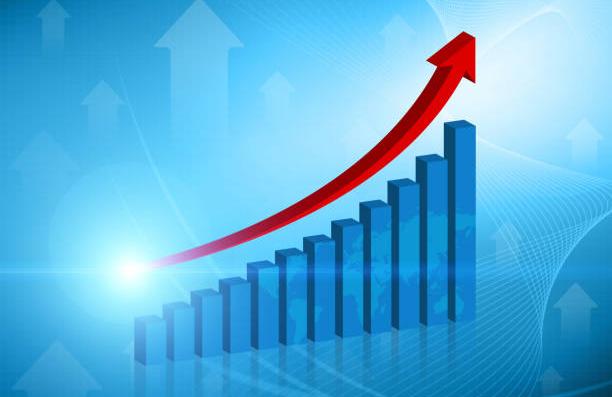Fill your Calendar with Leads and guarantee a 35% increase in Sales Conversion

16 years already in sales training, and I am surprised how companies invest hardly on marketing to get new leads, and those same leads are not turned into customers simply because salespeople are not ready and trained to turn every potential customer into a customer.
Click to get an instant quote for a group sales training.
In-store retail sales: Close rates can range from 20% to 40%, depending on factors like product type and customer engagement
E-commerce sales: Online retail close rates are generally lower, often between 1% and 3%, influenced by website usability and marketing effectiveness.
In the sales insurance sector:
Sales close rates can vary based on the complexity of the product and the sales approach:
- Commercial Insurance sales: Average close rates are around 1.7%, reflecting the longer sales cycles and detailed underwriting processes involved.
- Personal Insurance sales: While specific figures are scarce, personal insurance products may experience higher close rates due to simpler products and more straightforward sales processes.
Real Estate Sales
Real estate transactions involve significant investments and longer decision-making periods:
- Commercial Real Estate: Close rates average about 2.8%, considering the complexity and scale of deals.
- Residential Real Estate: While exact numbers are less defined, residential agents often aim for close rates between 20% and 30%, influenced by market conditions and client readiness.
B2B Sales (Business-to-Business)
B2B close rates are influenced by factors like deal size, sales cycle length, and the number of decision-makers:
- General B2B Sales: Close rates typically range from 20% to 30%, with high-performing teams reaching the upper end of this spectrum
- B2B Software/SaaS: Close rates can vary between 18% and 32%, depending on whether the target is enterprise or SMB clients
Although numbers in some sectors look normal, companies can perform much better with a proven sales process like the one given with the MISDP Sales Training. Not implementing a tailored approach for salespeople within a company is like leaving money on the table and never coming back to take the money.
In many cases, b2b businesses invest 3 times more to get the results they want, where they can simply replace this investment with one-time development for a business and put a sales training in place. Sales training is not only a training solution but also provides a roadmap for future salespeople that can be applied seamlessly, which can help with increased sales numbers and revenues for businesses that apply.
But why should companies in Canada, the United States, and Europe invest in sales training when marketing is a great accessible solution?
Training and marketing are both essential departments in every business, but although marketing today is not expensive, businesses should invest in conversion marketing and converted sales. They should decrease the cost of marketing and focus on sales to generate more leads into customers. Otherwise, they will be leaving money on the table as discussed earlier. In this approach, businesses will decrease costs and increase conversion rates. For example, the actual picture today is that businesses are getting 100 leads and transforming around 25% of 100 leads. If companies invested in sales training, this should increase conversion by a minimum of 60% instead of 25%. The 35% increase is not the only increase, but there are also decreases in time, efforts, and energy consumed.
Sales Training today can’t be generalized to produce results and increase sales conversion rates. MISDP Sales Training developed tailored training systems for different sectors, including but not limited to retail sales training, real estate sales training, Insurance sales training, medical sales training, automotive sales training, and business-to-business sales training (B2B Sales Training) … This approach provided a roadmap to businesses that led to sales increases, higher conversion rates, and an internal power system that reflects positivity, power, and better expansion for the business.
On the other hand, Dr. Marc Beainy continued to explain that today's market is different and generating leads is no longer like in the 90s or even in 2020. Today, some companies are struggling to find leads, and other companies are overwhelmed with leads. In the past, Businesses used to count on salespeople to get new leads. In today’s world, generating leads is a mix of visuals and AI that can fill your calendar and especially for those who are in B2B businesses.
But how can businesses generate more leads and increase closing rates?
Today, generating leads and increasing income is a tool that any business can learn and apply, and MISDP sales training is one of the big answers to this question, where tailored solutions will be discussed, processes implemented, and solutions trained to salespeople to apply and succeed.
Click to request a quote for your MISDP Sales Training
References:
Retail Sector
While specific close rate data is limited, the following study examines factors influencing customer repurchase intentions in retail settings:
- Muzumdar, P., Basyal, G. P., & Vyas, P. (2021). Moderating effects of retail operations and hard-sell sales techniques on salesperson's interpersonal skills and customer repurchase intention. arXiv preprint arXiv:2103.00054.
Insurance Sector
Detailed close rate statistics are scarce; however, the following article provides insights into insurance product sales trends in Canada:
- Canadian Underwriter. (2024, June 21). What insurance products sell the best? What our broker survey discovered.
Real Estate Sector
Specific peer-reviewed articles on real estate close rates in Canada are limited. For comprehensive data, consulting industry reports or government publications may provide more detailed insights.
B2B Sector
The following studies explore predictive modeling approaches to sales outcomes in B2B contexts:
- Yan, J., Gong, M., Sun, C., Huang, J., & Chu, S. M. (2015). Sales pipeline win propensity prediction: A regression approach. arXiv preprint arXiv:1502.06229.
- Rezazadeh, A. (2020). A generalized flow for B2B sales predictive modeling: An Azure Machine Learning approach. arXiv preprint arXiv:2002.01441.
